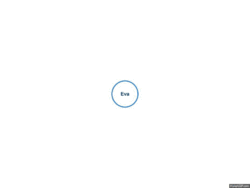Social graph
The social graph in the Internet context is a graph that depicts personal relations of internet users. In short, it is model or representation of a social network, where the word graph has been taken from graph theory. The social graph has been referred to as "the global mapping of everybody and how they're related".[1]
The term was popularized at the Facebook F8 conference on May 24, 2007, when it was used to explain how the newly introduced Facebook Platform would take advantage of the relationships between individuals to offer a richer online experience.[2] The definition has been expanded to refer to a social graph of all Internet users.
Since explaining the concept of the social graph, Mark Zuckerberg, founder of Facebook, has often touted Facebook's goal of offering the website's social graph to other websites so that a user's relationships can be put to use on websites outside of Facebook's control.[3] This can be accomplished through the Facebook Open Graph API.
One of the earliest known forms of the social graph was created in 2002 by Harvard student Philippe Bouzaglou in a paper published on the Harvard Department of Economics website. The paper replicated the Kevin Bacon Game using Harvard students and for the first time, gave an overview of an entire social graph, allowing the analysis of the characteristics of the network using graph theory. This paper was written for a seminar that was attended by Dustin Moskovitz who later became a Facebook co-founder.
Issues
Several issues have come forward regarding the existing implementation of the social graph owned by Facebook. For example, currently, a social networking service is unaware of the relationships forged between individuals on a different service. This creates an online experience that is not seamless, and instead provides for a fragmented experience due to the lack of an openly available graph between services. In addition, existing services define relationships differently.
As of 2010, Facebook's social graph is the largest social network dataset in the world,[4] and it contains the largest number of defined relationships between the largest number of people among all websites because it is the most widely used social networking service in the world.[5] Concern has focused on the fact that Facebook's social graph is owned by the company and is not shared with other services, giving it a major advantage over other services and preventing its users from taking their graph with them to other services when they wish to do so, such as when a user is dissatisfied with Facebook. Google has attempted to offer a solution to this problem by creating the Social Graph API, released in January 2008,[6] which allows websites to draw publicly available information about a person to form a portable identity of the individual, in order to represent a user's online identity.[7] This did not, however, experience Google's desired uptake and was thus retired in 2012.[8] Facebook introduced its own Graph API at the 2010 f8 conference. Both companies monetise collected data sets through direct marketing and social commerce.[9]
Open Graph
Facebook's Graph API allows websites to draw information about more objects than simply people, including photos, events, and pages, and their relationships between each other. This expands the social graph concept to more than just relationships between individuals and instead applies it to virtual non-human objects between individuals, as well.[10]
Open Graph protocol
Open Graph Protocol is a protocol which used to enhance the webpage information in a social media. It helps to fetch the webpage data and display in social media with rich graph. The Open Graph protocol[11] was originally created by Facebook, and is used to assign properties (title, URL, image etc) to your object.
<meta property="og:type" content="article">
<meta property="og:title" content="">
<meta property="og:site_name" content="">
<meta property="og:url" content="">
<meta property="og:image" content="">
<meta property="article:published_time" content="">
<meta property="og:image" content="">
<meta property="article:author" content="">
For Example:
<meta property="og:type" content="article">
<meta property="og:title" content="How to write Open Graph for Article">
<meta property="og:site_name" content="SEO Leap">
<meta property="og:url" content="https://seoleap.blogspot.com">
<meta property="og:image" content="https://s14.postimg.org/fmh0f45vl/seo_leap.png">
<meta property="article:published_time" content="2016-10-17">
<meta property="og:description" content="Open Graph Protocol is a protocol which used to enhance the webpage information in a social media."/>
See also
- List of social networking websites
- Social network
- Social network analysis
- Social network analysis software
- Social web
- Sociomapping
- Sociometry
- Jacob L. Moreno
References
- ↑ "Facebook: One Social Graph to Rule Them All?". CBS News. Retrieved July 11, 2010.
- ↑ "Facebook Unveils Platform for Developers of Social Applications". Facebook. Retrieved July 11, 2010.
- ↑ "Facebook's Zuckerberg uncorks the social graph". ZDNet. Retrieved July 11, 2010.
- ↑ "One Graph To Rule Them All?". A VC. Retrieved July 11, 2010.
- ↑ "Facebook: No. 1 Globally". BusinessWeek. Retrieved July 11, 2010.
- ↑ "Google Launches Social Graph API". InformationWeek. Retrieved July 11, 2010.
- ↑ "Is Google's social graph API a Creeping Privacy Violation?". ReadWriteWeb. Retrieved July 11, 2010.
- ↑ "Renewing old resolutions for the new year". Official Google Blog. Retrieved August 14, 2012.
- ↑ Barok, Dušan (2011-05-22). "Privatising Privacy: Trojan Horse in Free Open Source Distributed Social Platforms". Retrieved 2011-10-15.
- ↑ "Graph API". Facebook. Retrieved July 11, 2010.
- ↑ "Open Graph Protocol".

